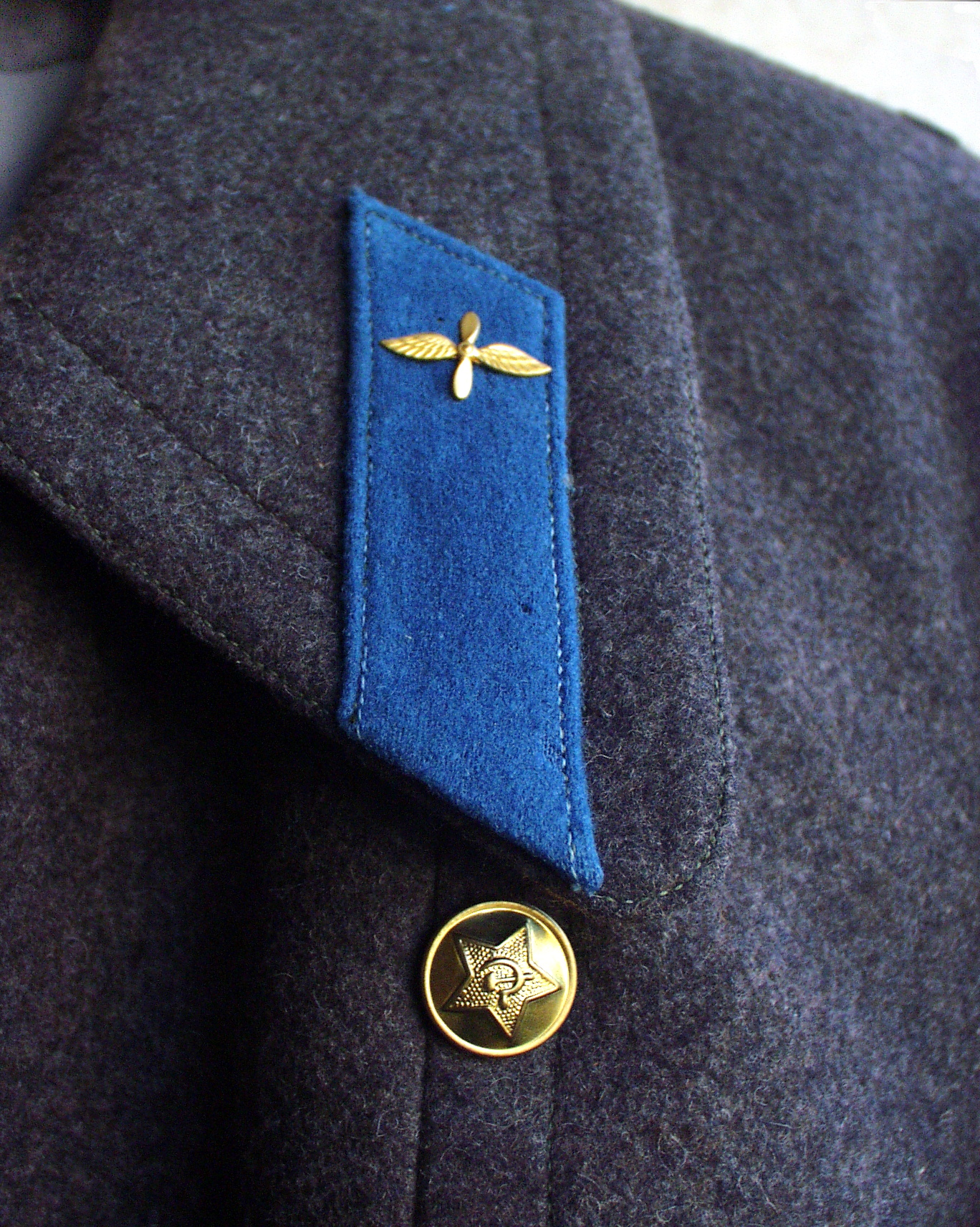|
General Of The Army (Soviet Union)
Army general (russian: генерал армии, general armii) was a rank of the Soviet Union which was first established in June 1940 as a high rank for Red Army generals, inferior only to the marshal of the Soviet Union. In the following 51 years the Soviet Union created 133 generals of the army, 32 of whom were later promoted to the rank of ''marshal of the Soviet Union''. It is a direct counterpart of the Russian Federation's " Army general" rank. Promotion The rank was usually given to senior officers of the Ministry of Defence and General Staff, and also to meritorious military district commanders. From the 1970s, it was also frequently given to the heads of the KGB and the Ministry of the Interior. Soviet ''army generals'' include Ivan Chernyakhovsky (the youngest Soviet World War II front commander, killed in East Prussia), Aleksei Antonov (head of the General Staff in the closing stages of World War II, awarded the Order of Victory), Issa Pliyev (an Ossetian-bor ... [...More Info...] [...Related Items...] OR: [Wikipedia] [Google] [Baidu] |
General Of The Army (Russia)
Army general (russian: Генера́л а́рмии, Generál ármii) is the second highest military rank in Russia, inferior only to a marshal and superior to a colonel general. It is a direct counterpart of the Soviet Army General rank. At present it is also the highest rank in the air force, artillery, aerospace defense forces, armored troops, engineer troops and signal troops, unlike the Soviet Union where similarly ranked officers were called marshals and chief marshals of a branch. The corresponding naval rank is admiral of the fleet. On appointment as Defence Minister on 7 May 1992, Pavel Grachev was the first officer to be promoted to this rank. Vladimir Yakovlev was promoted to this grade while serving as commander of the Strategic Missile Forces (1997–2001). Rank insignia Since 2013, the rank insignia has been one big star and the army emblem on straps which was also used until 1997, as in the Soviet Army since 1974. Between 1997 and 2013, the rank insignia ... [...More Info...] [...Related Items...] OR: [Wikipedia] [Google] [Baidu] |
Cuban Missile Crisis
The Cuban Missile Crisis, also known as the October Crisis (of 1962) ( es, Crisis de Octubre) in Cuba, the Caribbean Crisis () in Russia, or the Missile Scare, was a 35-day (16 October – 20 November 1962) confrontation between the United States and the Soviet Union, which escalated into an international crisis when American deployments of missiles in Italy and Turkey were matched by Soviet deployments of similar ballistic missiles in Cuba. Despite the short time frame, the Cuban Missile Crisis remains a defining moment in national security and nuclear war preparation. The confrontation is often considered the closest the Cold War came to escalating into a full-scale nuclear war. In response to the presence of American Jupiter ballistic missiles in Italy and Turkey, the failed Bay of Pigs Invasion of 1961, and Soviet fears of a Cuban drift towards China, Soviet First Secretary Nikita Khrushchev agreed to Cuba's request to place nuclear missiles on the island to deter a ... [...More Info...] [...Related Items...] OR: [Wikipedia] [Google] [Baidu] |
Chevron (insignia)
A chevron (also spelled cheveron, especially in older documents) is a V-shaped mark or symbol, often inverted. The word is usually used in reference to a kind of fret in architecture, or to a badge or insignia used in military or police uniforms to indicate rank or length of service, or in heraldry and the designs of flags (see flag terminology). Ancient history Appearing on pottery and petrographs throughout the ancient world, the chevron can be considered to be one of the oldest symbols in human history, with V-shaped markings occurring as early as the Neolithic era (6th to 5th millennia BC) as part of the Vinča symbols inventory. The Vinča culture responsible for the symbols appear to have used the chevron as part of a larger proto-writing system rather than any sort of heraldic or decorative use, and are not known to have passed the symbol on to any subsequent cultures.Mäder, Michael: ''Ist die Donauschrift Schrift?'' Budapest: Archaeolingua. , (2019), Many comparativ ... [...More Info...] [...Related Items...] OR: [Wikipedia] [Google] [Baidu] |
Gorget Patches
Gorget patches (collar tabs, collar patches) are an insignia in the form of paired patches of cloth or metal on the collar of a uniform (gorget), used in the military and civil service in some countries. Collar tabs sign the military rank (group of ranks), the rank of civil service, the military unit, the office (department) or the branch of the armed forces and the arm of service. History Gorget patches were originally gorgets, pieces of armour worn to protect the throat. With the disuse of armour, gorgets were relegated to decorative use. The cloth patch on the collar however evolved from contrasting cloth used to reinforce the buttonholes at the collar of a uniform coat. (This is perhaps most evident in the traditional Commonwealth design for Colonels, which has a button and a narrow line of darker piping where the slit buttonhole would have been.) In the British Empire the patches were introduced as insignia during the South African War (1889-1902). They have been used ever ... [...More Info...] [...Related Items...] OR: [Wikipedia] [Google] [Baidu] |
Soviet Armed Forces
The Soviet Armed Forces, the Armed Forces of the Soviet Union and as the Red Army (, Вооружённые Силы Советского Союза), were the armed forces of the Russian SFSR (1917–1922), the Soviet Union (1922–1991), and the Bolshevik Party from their beginnings in the Russian Civil War of 1917–1923 to the collapse of the USSR in 1991. In May 1992, Russian President Boris Yeltsin issued decrees forming the Russian Armed Forces, which subsumed much of the Soviet Armed Forces. Much of the former Soviet Armed Forces in the other 14 Soviet republics gradually came under those republics' control. According to the all-union military service law of September 1925, the Soviet Armed Forces consisted of the Ground Forces, the Air Forces, the Navy, the State Political Directorate (OGPU), and the convoy guards. The OGPU was later made independent and amalgamated with the NKVD in 1934, and thus its Internal Troops were under the joint management of the Defence and In ... [...More Info...] [...Related Items...] OR: [Wikipedia] [Google] [Baidu] |
Soviet Army
uk, Радянська армія , image = File:Communist star with golden border and red rims.svg , alt = , caption = Emblem of the Soviet Army , start_date = 25 February 1946 , country = (1946–1991)' (1991–1992) , branch = , type = Army , role = Ground warfare, Land warfare , size = 3,668,075 active (1991) 4,129,506 reserve (1991) , command_structure = , garrison = , garrison_label = , nickname = "Red Army" , patron = , motto = ''За нашу Советскую Родину!(Za nashu Sovetskuyu Rodinu!)''"For our Soviet Motherland!" , colors = Red and yellow , colors_label = , march ... [...More Info...] [...Related Items...] OR: [Wikipedia] [Google] [Baidu] |
Red Army Badge
Red is the color at the long wavelength end of the visible spectrum of light, next to orange and opposite violet. It has a dominant wavelength of approximately 625–740 nanometres. It is a primary color in the RGB color model and a secondary color (made from magenta and yellow) in the CMYK color model, and is the complementary color of cyan. Reds range from the brilliant yellow-tinged scarlet and vermillion to bluish-red crimson, and vary in shade from the pale red pink to the dark red burgundy. Red pigment made from ochre was one of the first colors used in prehistoric art. The Ancient Egyptians and Mayans colored their faces red in ceremonies; Roman generals had their bodies colored red to celebrate victories. It was also an important color in China, where it was used to color early pottery and later the gates and walls of palaces. In the Renaissance, the brilliant red costumes for the nobility and wealthy were dyed with kermes and cochineal. The 19th century brought the ... [...More Info...] [...Related Items...] OR: [Wikipedia] [Google] [Baidu] |
Red Army Flag
Red is the color at the long wavelength end of the visible spectrum of light, next to orange and opposite violet. It has a dominant wavelength of approximately 625–740 nanometres. It is a primary color in the RGB color model and a secondary color (made from magenta and yellow) in the CMYK color model, and is the complementary color of cyan. Reds range from the brilliant yellow-tinged scarlet and vermillion to bluish-red crimson, and vary in shade from the pale red pink to the dark red burgundy. Red pigment made from ochre was one of the first colors used in prehistoric art. The Ancient Egyptians and Mayans colored their faces red in ceremonies; Roman generals had their bodies colored red to celebrate victories. It was also an important color in China, where it was used to color early pottery and later the gates and walls of palaces. In the Renaissance, the brilliant red costumes for the nobility and wealthy were dyed with kermes and cochineal. The 19th century brought ... [...More Info...] [...Related Items...] OR: [Wikipedia] [Google] [Baidu] |
Chief Marshal Of The Branch
Chief marshal of the branch (russian: Главный маршал рода войск, Glavny marshal roda voysk) was a senior military rank of the Soviet Armed Forces. It was immediately above the rank of Marshal of the branch. Both ranks were equal to general of the army. History The ranks of chief marshal of aviation, artillery, armoured troops, engineer troops, and signals were established on 27 October 1943. The three former branches had already had (since 4 February 1943) the corresponding ranks of marshal; in the two latter branches the ranks of marshal and of chief marshal were established simultaneously. When the rank of chief marshal was established, the size of the shoulder board's stars for all marshals except the rank of Marshal of the Soviet Union were made about 10mm smaller, and for chief marshals, the star was surrounded by a laurel wreath. On the uniform tie, chief marshals wore the marshal's star of the 2nd level. During the next forty years, the ranks of chie ... [...More Info...] [...Related Items...] OR: [Wikipedia] [Google] [Baidu] |
Marshal Of The Branch
Marshal of the branch (or "marshal of the branch of service"; russian: Ма́ршал ро́да во́йск, Marshal roda voysk) was from 1943 to 1974 the designation to a separate rank class in the general officer's rank group of the former Soviet Union's armed forces. However, at that time, marshal of the branch was also the lowest marshal-rank of the Red Army, and later of the Soviet Army. Marshal of the branch was nominally the equivalent rank level to army general. However, general officers on that particular rank were not authorised, competent and mandated to be appointed to, or to act on the position of commander in chief of a big formation or command. Establishment The term "marshal of the branch" was calqued from the German ( general of the branch). The ranks of marshal of aviation, artillery and armoured troops branches were established on February 4, 1943, with a large, approximately 50mm wide, shoulder board star (the same star as the at-the-time equivalent r ... [...More Info...] [...Related Items...] OR: [Wikipedia] [Google] [Baidu] |




